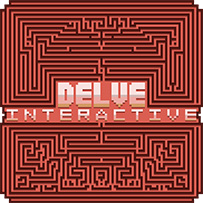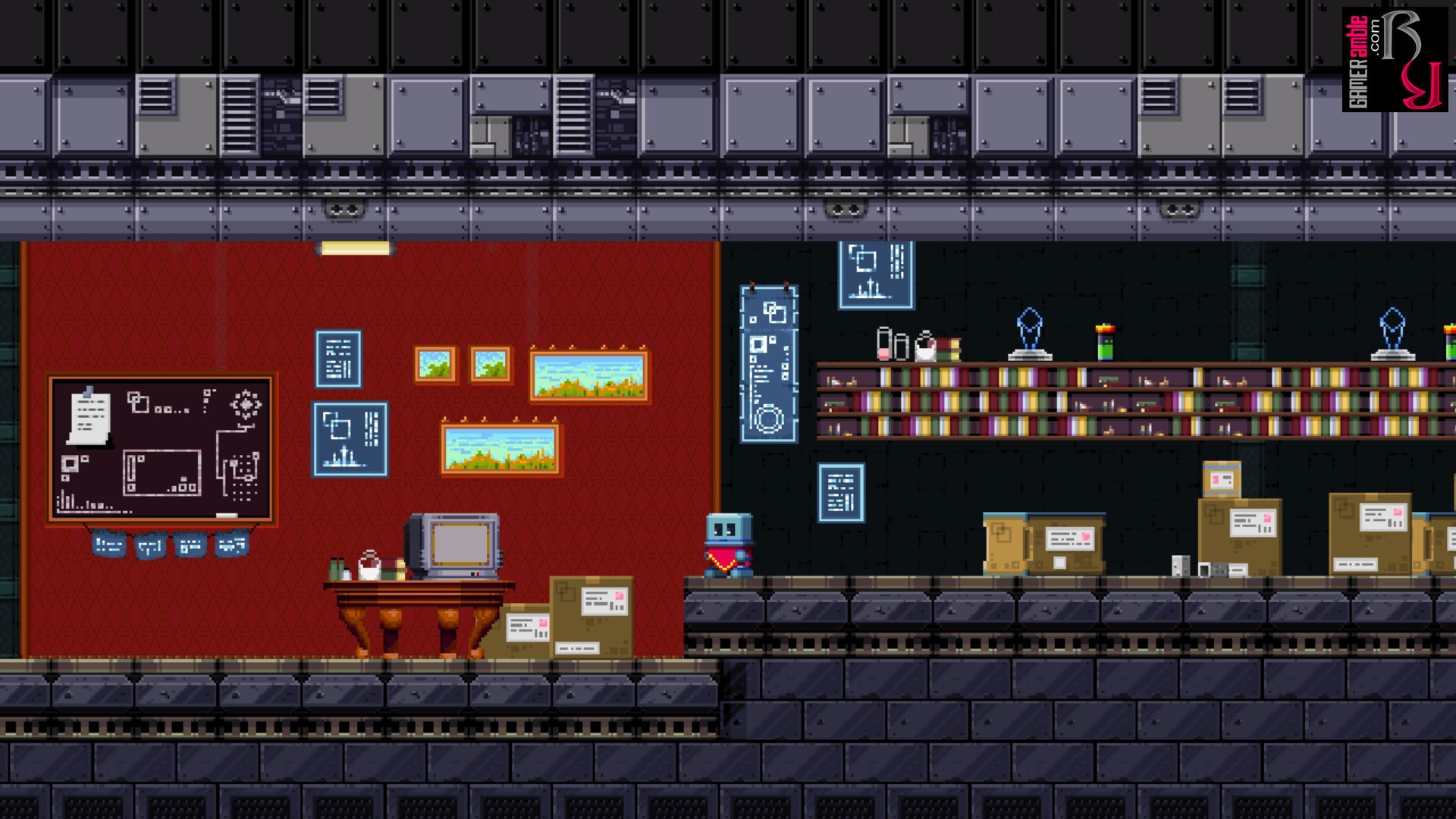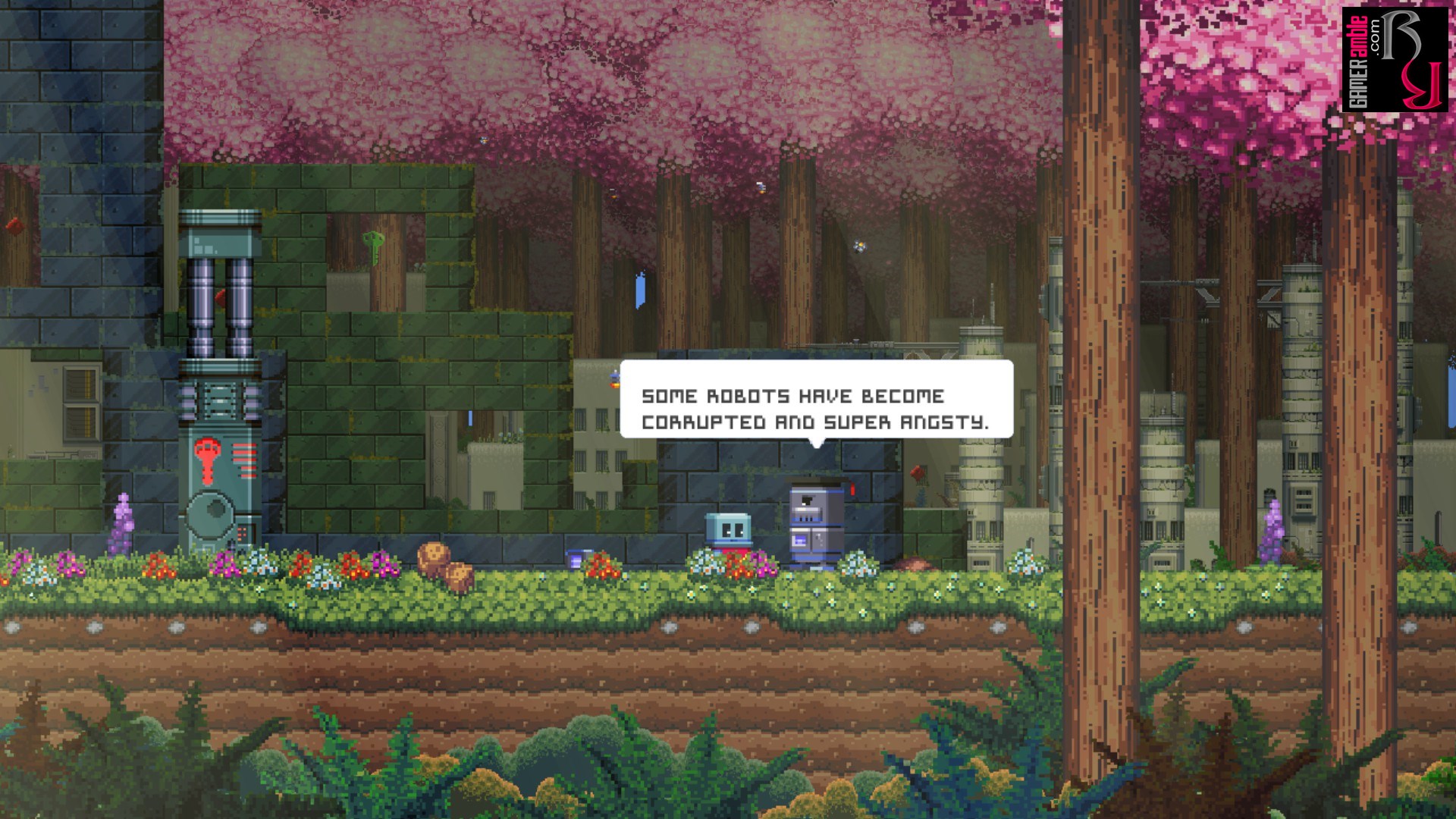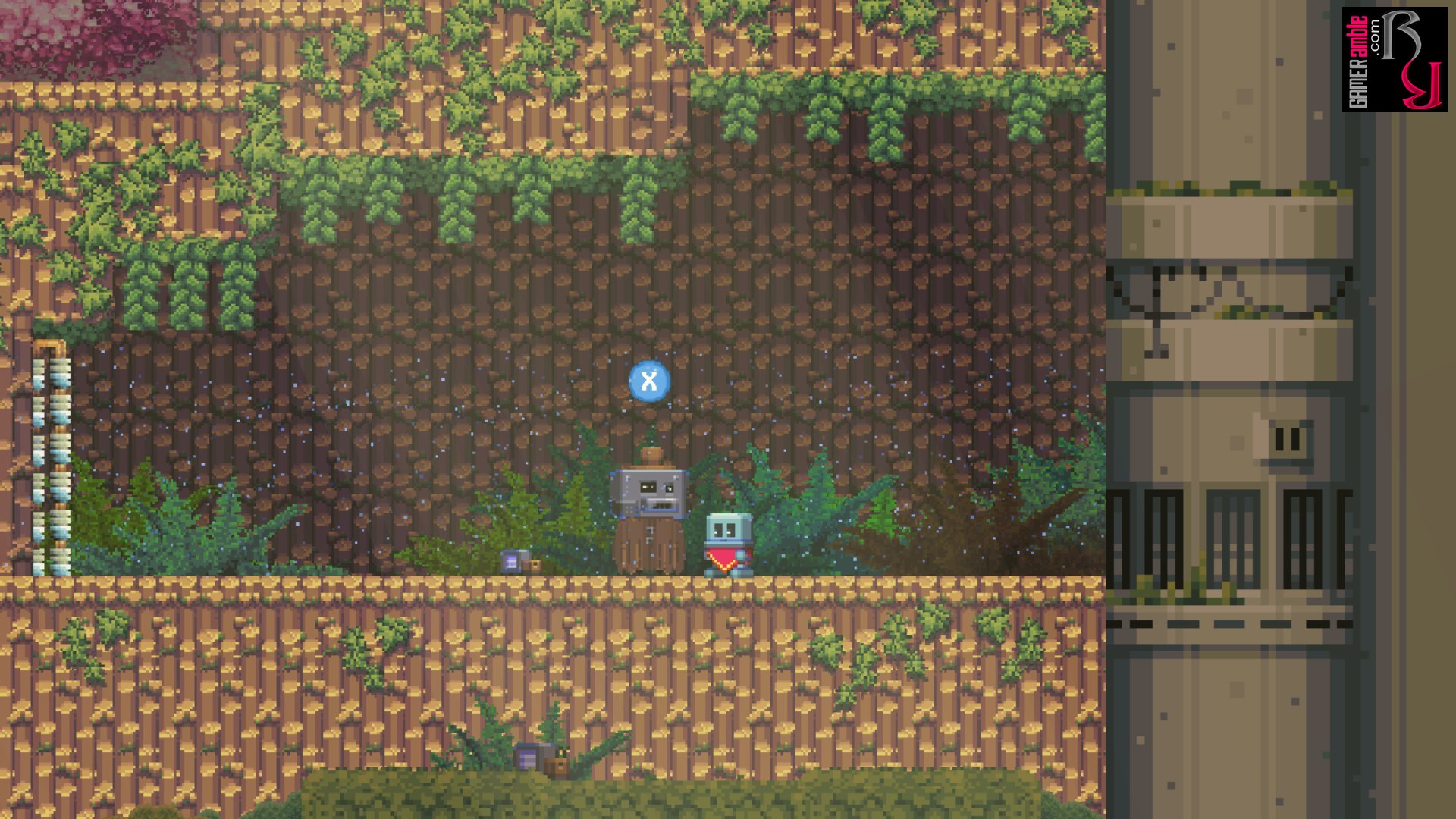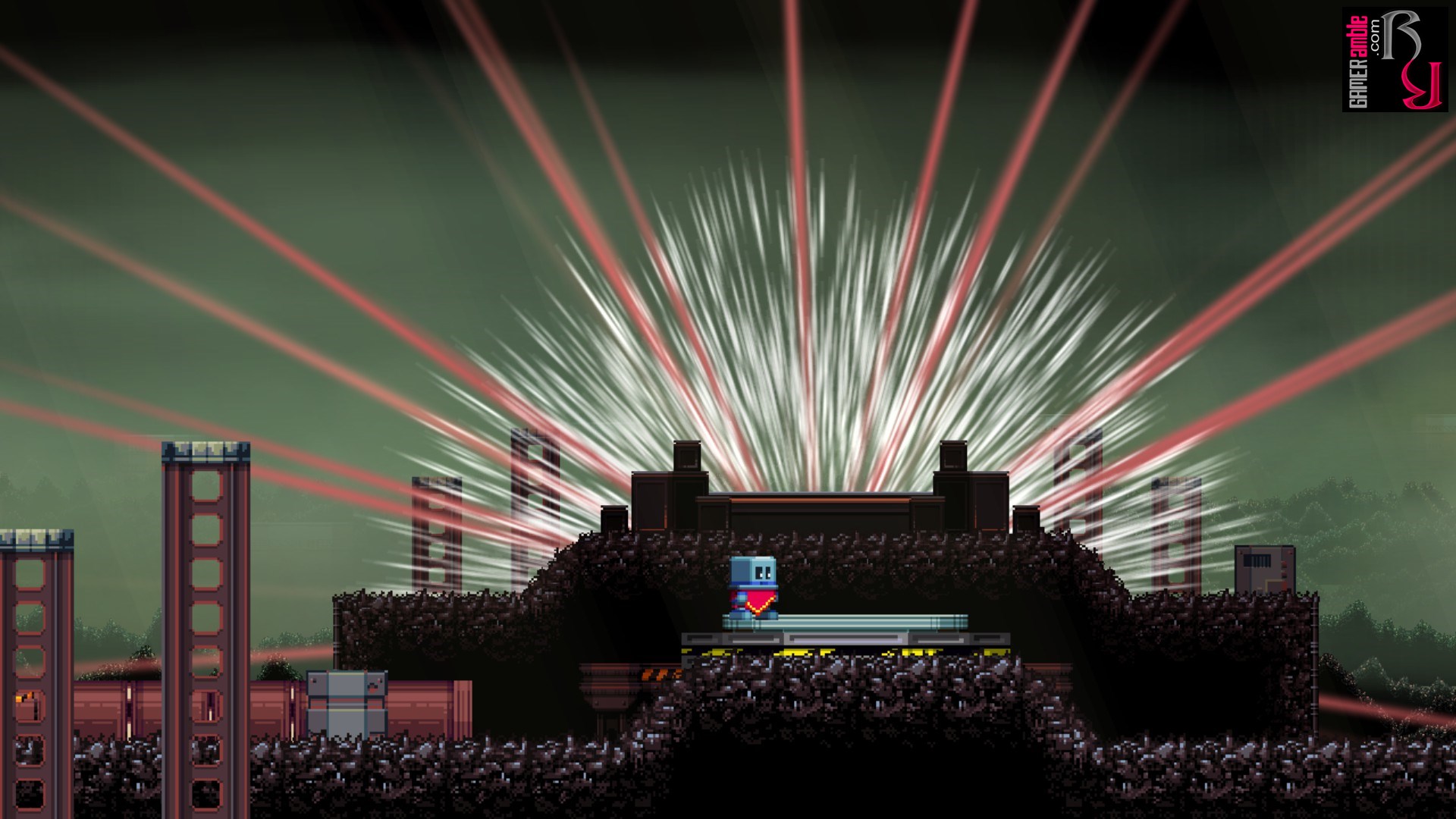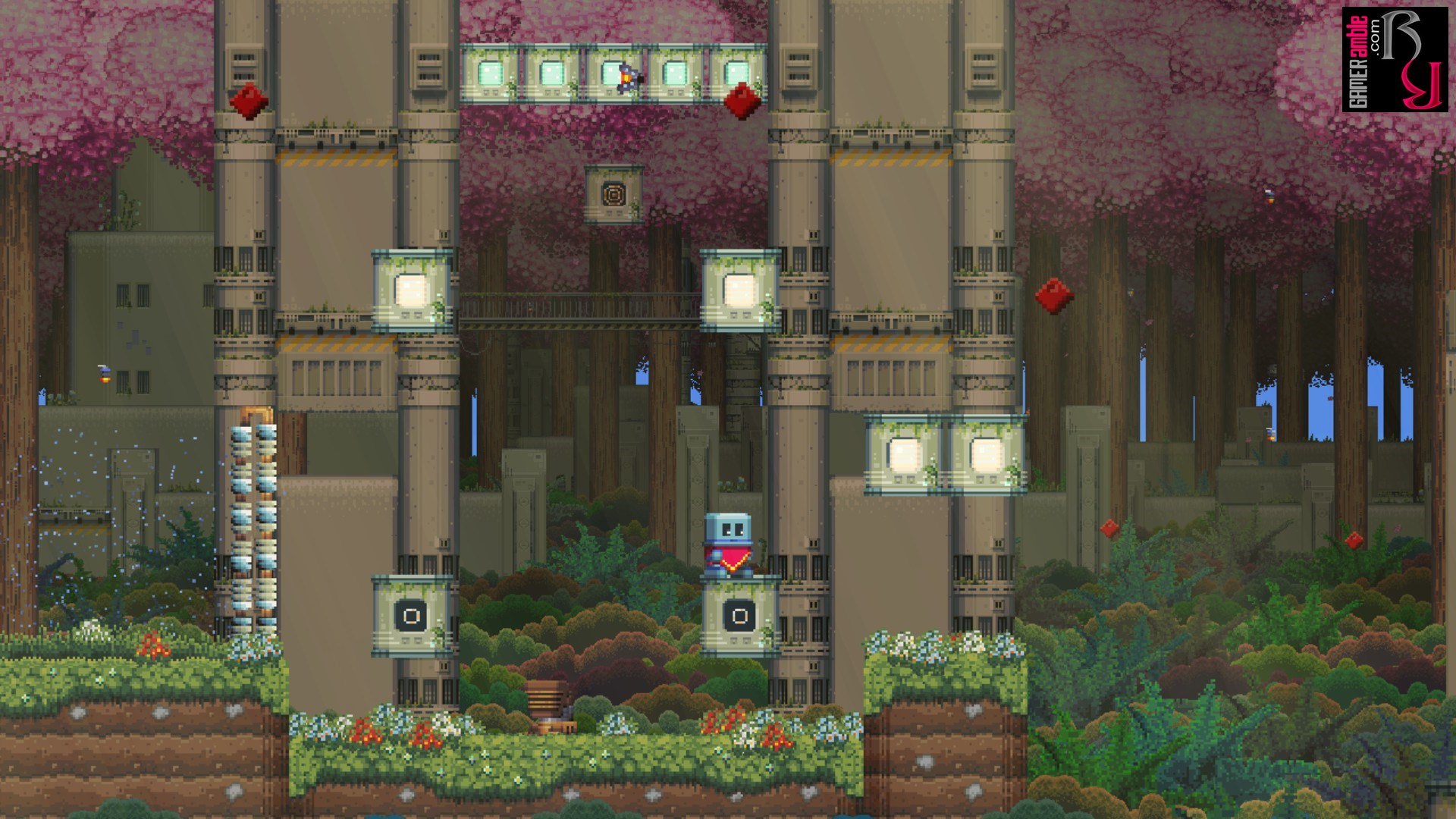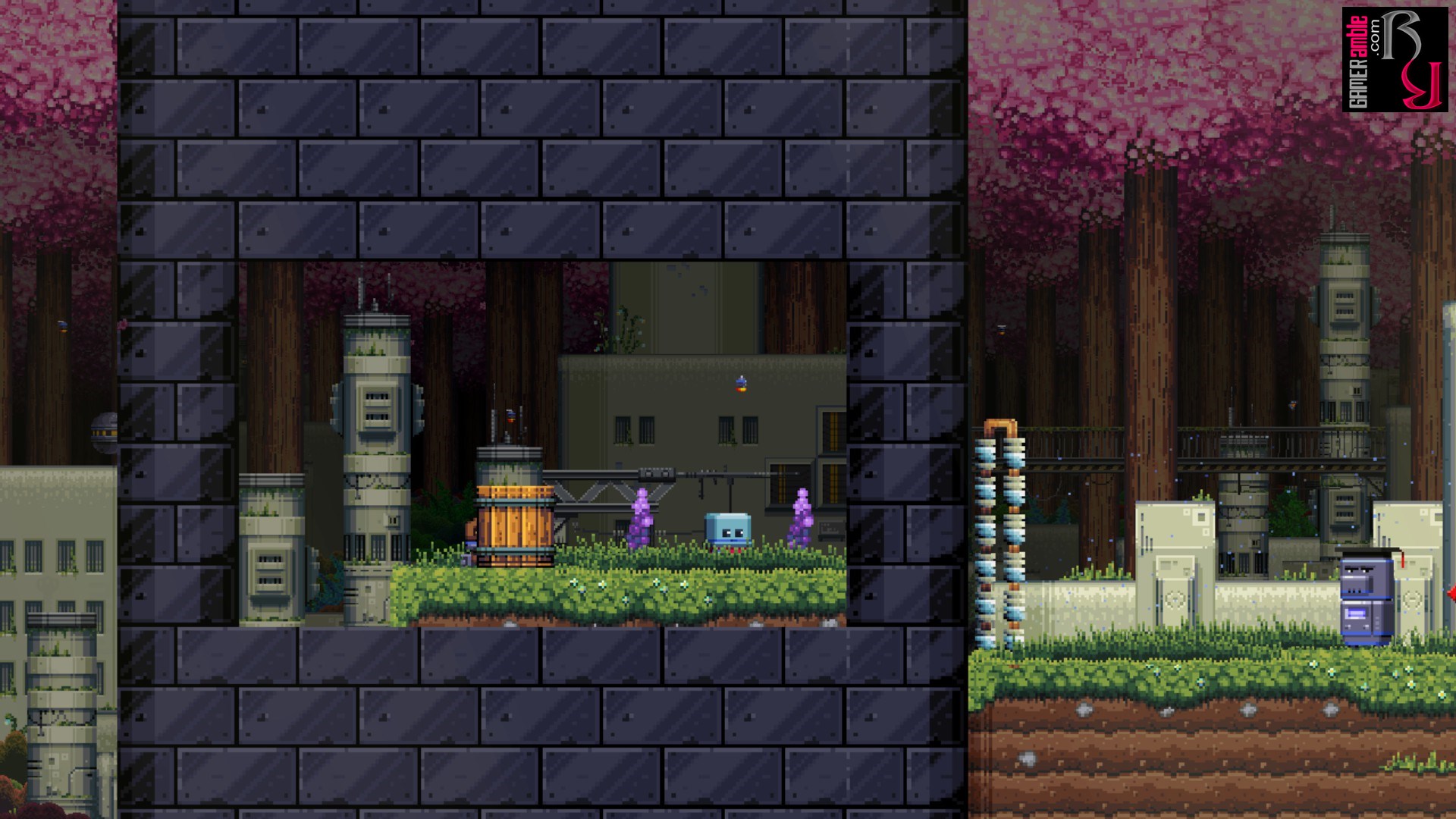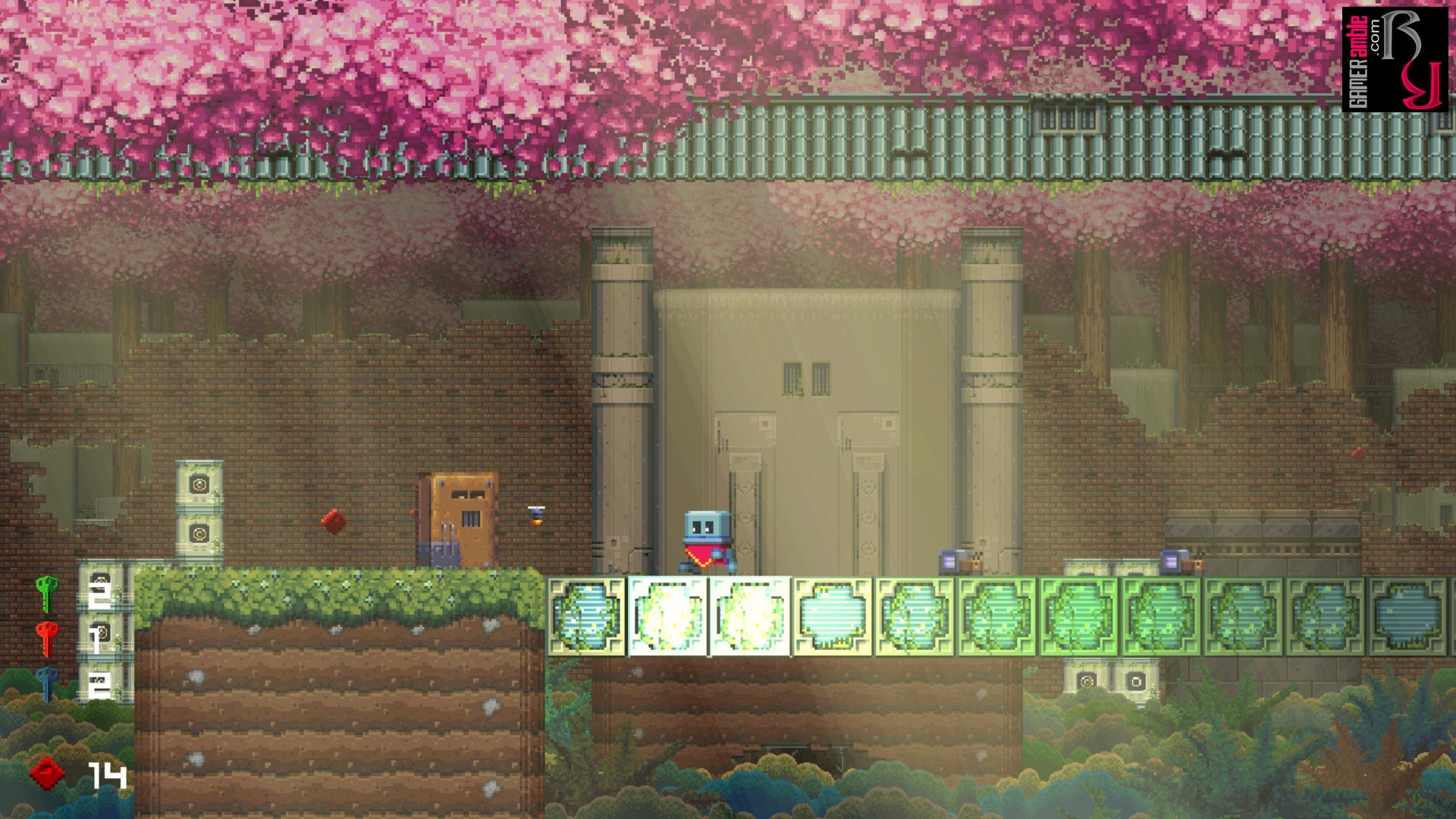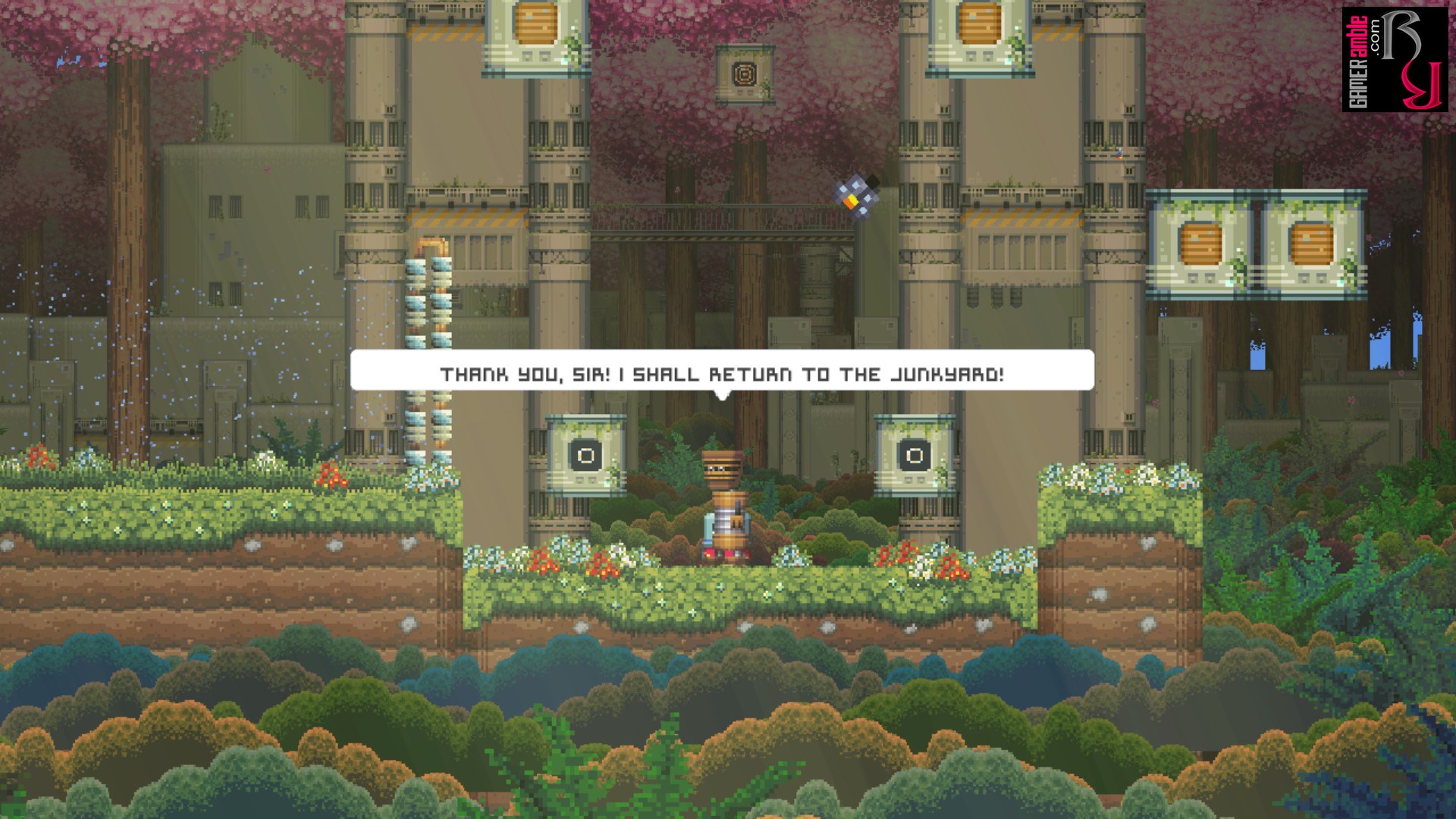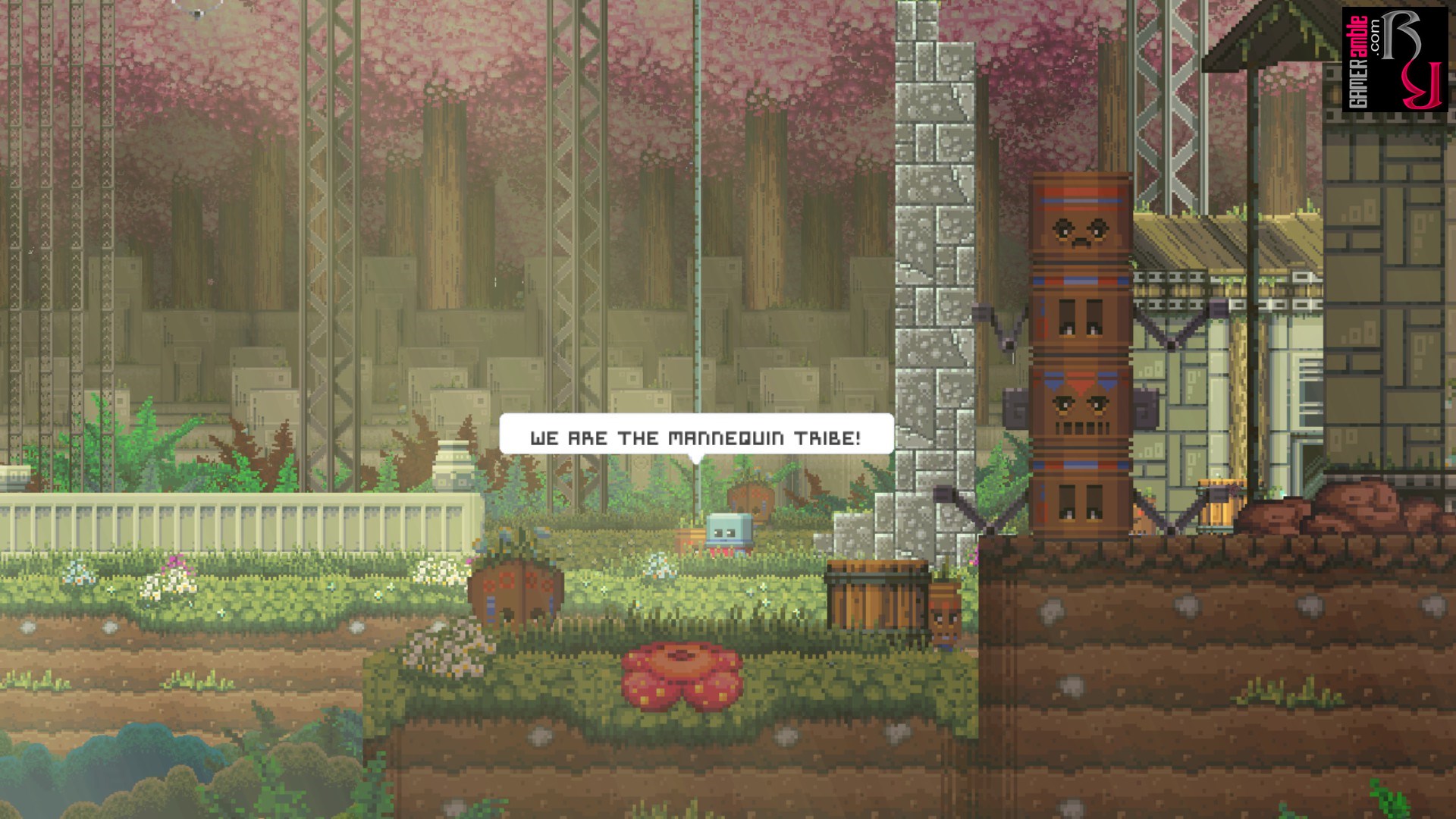Poncho (Delve Interactive)
Just like any 2D platform game with a shadow motif will probably be compared to Limbo for the foreseeable future, PONCHO is inevitable going to draw comparisons to Fez. From the title and vibrant pixel art visuals to the chiptune soundtrack and world shifting gameplay mechanics there are plenty of similarities. However, we spent some time playing this parallax platformer and it definitely has a unique identity of its own.
Set for release on PS4, PS Vita, Wii U, and Steam this September, PONCHO is the tale of a robot on a quest to find his creator. The game opens with the little poncho wearing robot waking up in a post-apocalyptic world where humanity has disappeared and nature has reclaimed the planet. The adorable robot might just hold the key to restoring humanity, but must figure out what happened first while tracking down its maker.
The game features beautiful pixel art visuals, but unlike in many 2D platformers, features parallax that isn’t just for show. Instead, the game plays out across three layers of depth and players can shift between these at will. Obviously, if there is nothing in the fore or background when shifting the protagonist will fall to its doom, but thankfully re-appears on the last piece of solid ground it touched. This means that while some of the platforming hopping puzzles can be tricky you are not limited by “lives” or checkpoints. While exploring the levels and solving puzzles, players collect keys and gems along with robot venders that sell the former for the latter.
Humanity might be gone, but the world of PONCHO is filled with randomly generated ecosystems of creatures. These robotic critters, along with the 3D depth of the levels, provides PONCHO with a very charming visual style. Initially, it is a little tricky to spot bottomless chasms and working out where to use the layer switching ability the most effectively, but the longer we played the more intuitive it became.
Despite the charming visuals and cheerful music PONCHO also has an undercurrent of melancholy to it. The gameworld is filled with all kinds of robots, but they all lost their purpose with humanity no longer around. Walking past these hapless automatons trigger a response where they inform you about their predicament and some of these actually tug at the heart strings. A few levels into the game, we also encountered an interesting robot, called the Junkyard King, who gave our poncho wearing protagonist the task of tracking down his “army.” This involved searching the levels for broken down robots that, once found, return to the junkyard. Although reaching the next area requires locating a special gate, players are free to explore the gameworld in any direction and return to previous areas. For example, you might find your path blocked by a gate that requires a green, red or blue key, prompting you to return after exploring other areas and finding what you need. We also unlocked a new ability while exploring, which could point to some areas being off limits until certain skills are required.
Considering that PONCHO is coming out in September the PC version that we played is in remarkably polished shape. The controls felt smooth and switching between layers soon became second nature. The depth and detail packed into the visuals are also very impressive, not to mention the great soundtrack.
We’ve played enough of PONCHO to know for sure that it is not simply a Fez clone, but an addictive and entertaining title in its own right. Fans of platformers, where the focus is on puzzle solving and exploration instead of killing everything in sight, should definitely mark September on their calendars.




